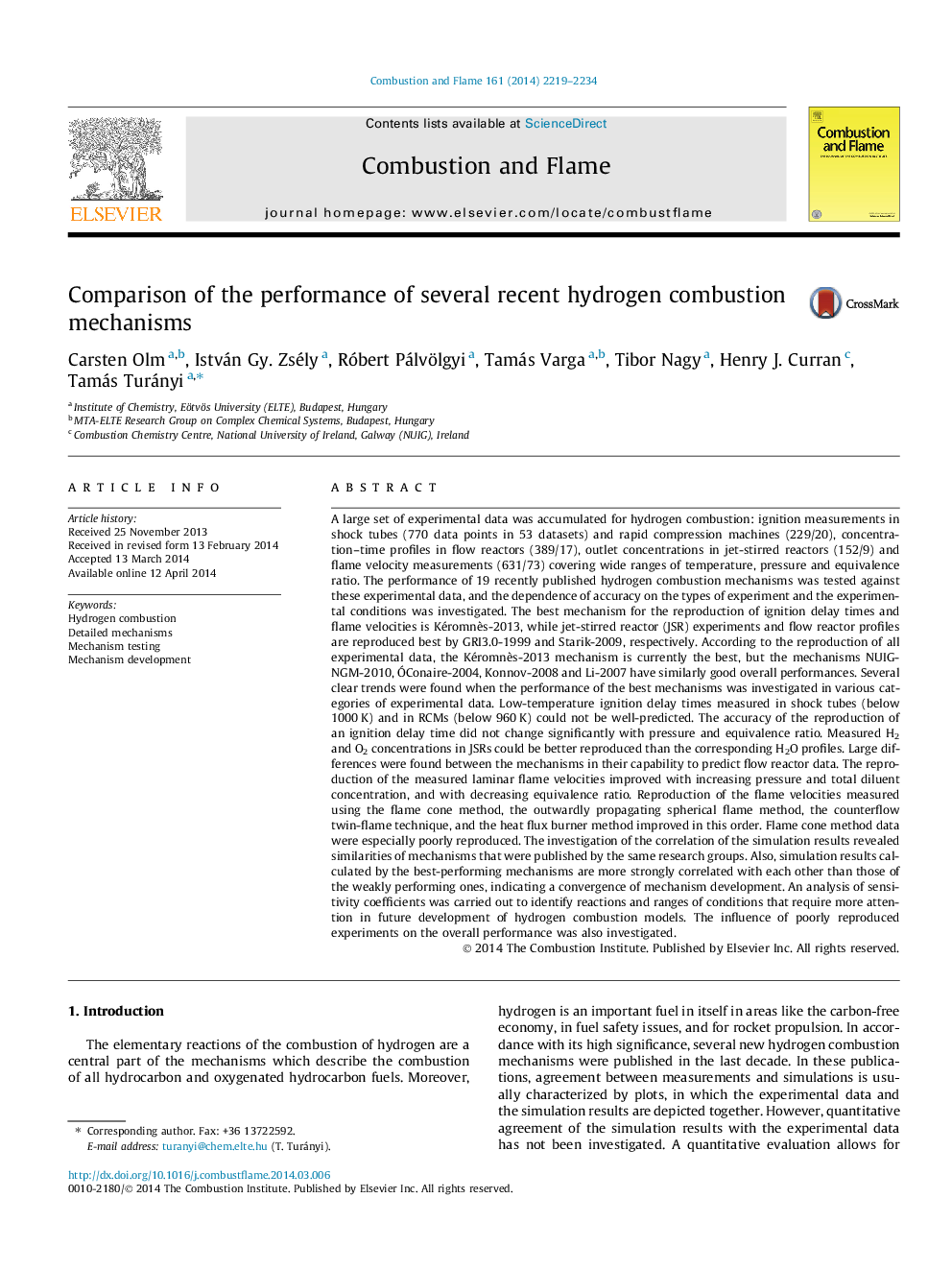| کد مقاله | کد نشریه | سال انتشار | مقاله انگلیسی | نسخه تمام متن |
|---|---|---|---|---|
| 168547 | 457938 | 2014 | 16 صفحه PDF | دانلود رایگان |
A large set of experimental data was accumulated for hydrogen combustion: ignition measurements in shock tubes (770 data points in 53 datasets) and rapid compression machines (229/20), concentration–time profiles in flow reactors (389/17), outlet concentrations in jet-stirred reactors (152/9) and flame velocity measurements (631/73) covering wide ranges of temperature, pressure and equivalence ratio. The performance of 19 recently published hydrogen combustion mechanisms was tested against these experimental data, and the dependence of accuracy on the types of experiment and the experimental conditions was investigated. The best mechanism for the reproduction of ignition delay times and flame velocities is Kéromnès-2013, while jet-stirred reactor (JSR) experiments and flow reactor profiles are reproduced best by GRI3.0-1999 and Starik-2009, respectively. According to the reproduction of all experimental data, the Kéromnès-2013 mechanism is currently the best, but the mechanisms NUIG-NGM-2010, ÓConaire-2004, Konnov-2008 and Li-2007 have similarly good overall performances. Several clear trends were found when the performance of the best mechanisms was investigated in various categories of experimental data. Low-temperature ignition delay times measured in shock tubes (below 1000 K) and in RCMs (below 960 K) could not be well-predicted. The accuracy of the reproduction of an ignition delay time did not change significantly with pressure and equivalence ratio. Measured H2 and O2 concentrations in JSRs could be better reproduced than the corresponding H2O profiles. Large differences were found between the mechanisms in their capability to predict flow reactor data. The reproduction of the measured laminar flame velocities improved with increasing pressure and total diluent concentration, and with decreasing equivalence ratio. Reproduction of the flame velocities measured using the flame cone method, the outwardly propagating spherical flame method, the counterflow twin-flame technique, and the heat flux burner method improved in this order. Flame cone method data were especially poorly reproduced. The investigation of the correlation of the simulation results revealed similarities of mechanisms that were published by the same research groups. Also, simulation results calculated by the best-performing mechanisms are more strongly correlated with each other than those of the weakly performing ones, indicating a convergence of mechanism development. An analysis of sensitivity coefficients was carried out to identify reactions and ranges of conditions that require more attention in future development of hydrogen combustion models. The influence of poorly reproduced experiments on the overall performance was also investigated.
Journal: Combustion and Flame - Volume 161, Issue 9, September 2014, Pages 2219–2234
